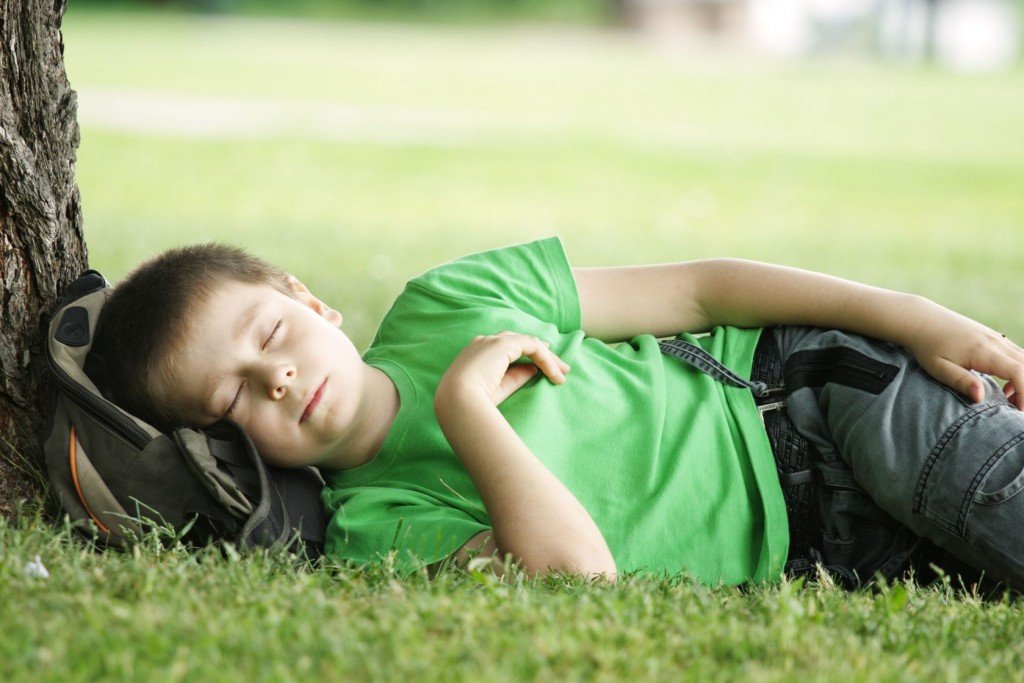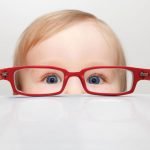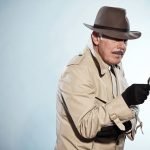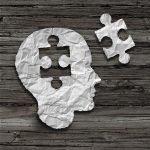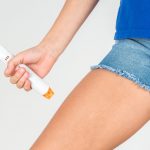The Expert Report
Interview With Catherine Darley, ND
Mark Swanson, ND
The patient age spectrum for sleep disorders requiring medical management ranges from infants to the elderly. The number of patients reporting sleep problems is staggering and is enough to keep millions awake at night, making sleep medicine among the fastest growing specialties in medicine. However, children do not always complain about their own sleep problems. They act out. It takes an observing parent who recognizes it and seeks proper medical care for their child. A well-trained and keen healthcare provider who understands sleep science and physiology, evaluation methods, and the most effective and safe treatments of children’s sleep disorders is paramount to meeting this critical care need.
Unquestionably, the most qualified naturopathic physician and expert in sleep medicine is Catherine Darley, ND. Her sleep medicine specialty is at the forefront of naturopathic medicine and is one of the only specialties of its kind in the country.
It is only proper and fitting for this special sleep medicine issue of NDNR that Dr Darley is featured twice, with her case report article “The Case of the ‘Daysleeper’” and here as my guest for The Expert Report interview titled “Dr CIDS—Children With Insomnia and Disordered Sleep.”
About Dr Darley
What is your educational background and current position?
Dr Darley: I am the director of The Institute of Naturopathic Sleep Medicine in Seattle, Washington. In 2002, I graduated with my ND degree from Bastyr University [Kenmore, Washington] and have BA and BS undergraduate degrees from The Evergreen State College [Olympia, Washington] in 1993. My entire career has been in sleep, first at a research center at Brown University [Providence, Rhode Island], then working as a sleep technologist at a Seattle hospital while a student at Bastyr.
As one of the few naturopathic sleep disorder specialists in the United States, is there a single period or experience in your medical training and career that contributed the most to your current “passion and advocacy” for helping children with sleep disorders?
Dr Darley: Working in the sleep research center was a formative experience. We were looking at sleep changes over maturation, and just doing the research protocol with the students, it was clear that there is a significant shift in sleep from age 10 to 14 years old. Twenty years later, there is still a lot of misunderstanding among the public about this shift in circadian rhythm, and teens suffer from it. Seeing how there is knowledge in the research world that is not being translated into improvements for the public is what motivated me to be a physician rather than a researcher. My hope is by helping children get healthy, adequate sleep they can avoid what for some is decades of sleep problems. I also find that when I’m working with a family to improve the child’s sleep, everyone in the family benefits as they also use the treatment principles themselves. It’s very gratifying to be able to improve the whole family’s sleep!
Helping Children’s Sleep Disorders
Please tell us more about what you are doing regarding this recognition and awareness as part of your sleep health outreach. This is so important because sleep disorders are often overlooked and underdiagnosed in the pediatric population. Only 1 in 5 pediatricians has received formal training in sleep disorders.1 It would be impossible to expect parents to know the signs and symptoms of their child’s sleep disturbances when study data clearly show that pediatricians have difficulty recognizing these problems as well.
Dr Darley: One thing I love to do is to speak to parents, usually through the school PTA [Parent-Teacher Association]. The first part of the talk is about engaging their motivation by discussing sleep and grades, school behaviors, and safety. Then we dial down to do a symptom checklist, which the parents fill out about their child. Here I cover not only explicit sleep symptoms (like snoring) but also talk about ADHD [attention-deficit/hyperactivity disorder], obesity, and caffeinism. I’ve also reached out to local school districts and done educational events for the school nurses and counselors. There is a national effort (and many local moves) to Start School Later,2 at a time when students are physiologically awake, and I volunteer with that initiative.
One thing that really resonates with me about naturopathic medicine is our value of creating healthy communities. I try to take this to heart and demonstrate it with my actions, and I encourage others too. Yes, it can be laborious to reach out to other organizations but also so rewarding. People are usually so glad to have information about alternatives and ways that they can be empowered to improve their own health. I like to take naturopathic medicine to groups of people, in addition to the one-to-one patient care.
About what percentage of the preadolescent population have been reported to have sleep problems? What is the most common?
Dr Darley: About 24% of children of all ages are thought to have clinically significant sleep problems, though a much smaller percentage are treated.3 The most common problems in younger children are bedtime resistance, night wakings, obstructive sleep apnea, and excessive daytime sleepiness. A good resource is A Clinical Guide to Pediatric Sleep: Diagnosis and Management of Sleep Problems, by Mindell and Owens.4
Common Sleep Problems
Can you briefly outline the primary sleep problems that occur in children and the most common signs and symptoms of each? What do you see the most in your practice?
Dr Darley: By far, the most common sleep disorder among children is insufficient sleep. It is shocking to know that 53% of grade school children get insufficient sleep,5 and that percentage climbs to 91% of high school seniors.6
In my office, I see many students with insomnia symptoms due to delayed sleep phase. A key question to ask is “Are you sleepy at bedtime?” (And differentiate between being tired and being sleepy.) These patients will report that they sleep fine during vacations or other times when they are able to sleep on their intrinsic schedule. There is a strong connection between sleep deprivation and serious suicidal thoughts and other risk behaviors, in teens. So, any young person who is struggling with these issues should be treated to get optimal sleep.
Toddlers and preschoolers often present with resistance to bedtime, frequent night wakings, and inability to focus during the day. This can be behavioral insomnia of childhood.
How might a naturopathic diagnosis and treatment of pediatric sleep problems be both similar and different from an allopathic sleep specialty approach?
Dr Darley: In my work, I use the International Classification of Sleep Disorders: Diagnostic & Coding Manual,7 just as other sleep specialists do. As a naturopathic physician, I also include diet, lifestyle, etc, in my assessment. A foundation of my approach is behavioral medicine, which allopathic sleep specialists may also include but not emphasize as much. A distinguishing feature of my practice is the amount of time I can give patients and parents, which they really appreciate. Although Seattle is a large city, there are only 2 sleep facilities, with a total of 4 physicians who will see pediatric sleep patients, so access is limited. Another distinguishing feature is that I look at the whole-family sleep system because if a child’s sleep is disrupted it usually disrupts others in the household. Part of the treatment plan also includes recommendations for the parents. When parents are well rested, they are better able to implement the plan that will help their child sleep.
The Sleep Lab
In your practice, what is the access and utility of the sleep lab in aiding in your evaluations and treatments in children and adults with sleep disorders?
Dr Darley: Many sleep disorders do not need overnight or daytime polysomnography to diagnose or treat the condition. In my initial consult, I always screen patients of all ages for the full spectrum of sleep disorders. If needed, I then refer them to a hospital-based sleep center for evaluation.
Two other notes: Over my career, I’ve strived to have a foot in both the naturopathic world and that of the allopathic sleep specialist. Here in Seattle, there is a weekly sleep case conference, which is open to all sleep specialists in the city. I regularly attend, so I am known in the community. My patients are able to get good coordinated care, and I get referrals from the other sleep specialists.
There is a trend to home testing for obstructive sleep apnea. There are some cautions about this, which all physicians should be aware of. Of particular concern is that home testing is not able to diagnose anything but obstructive sleep apnea; if your patient has central apnea or a movement disorder, it will be missed. Home testing can also yield false-negative results, putting your patient at risk for the significant cardiovascular problems of untreated sleep apnea.
Do sleep-disrupted children become sleep-disrupted adults?
Dr Darley: From my clinical observation, yes. One of the striking patterns among my adult patients is how many of them say their sleep problems began years ago as children. In my opinion, the early hours of middle and high schools contribute to this. Take a 14-year-old student. Her body clock has shifted later, so she is not physiologically sleepy until midnight. Yet, she has to be up at 6 AM for the school bus and thinks she should get at least 8 hours of sleep, (though teens need 9-9½ hours nightly). Therefore, she goes to bed at 10 PM, with all good intentions. However, because she isn’t physiologically sleepy, she lies awake in bed, frustrated that she can’t sleep, and with an active mind. This is perfect training to develop insomnia. Compound this by the years until her body clock shifts earlier (about age 23), and an insomniac is created.
A few research studies have looked at the question of whether sleep problems persist. It has been found that a high percentage of toddlers with sleep problems will continue having problems at least into grade school.8
How can naturopathic sleep medicine become a primary portal for reducing the epidemic of obesity, type 2 diabetes mellitus, and heart disease, beginning with its earliest linked onset in childhood?
Dr Darley: Parents are very concerned about the epidemic of obesity and type 2 diabetes in young people. What they may not be familiar with is the link between poor sleep health and these conditions. The first answer is to provide as much education as possible, both to individual patients and in your practice, via monthly newsletter, blog, etc. The link between sleep and diabetes is so strong, I think any diabetes patient should have a sleep component of their treatment plan, right along with the nutrition piece.
ND Sleep Medicine Education
We need more NDs like you! Is the current sleep medicine training received at accredited naturopathic medical schools adequate for NDs entering into a pediatric or family practice specialty? How can it be improved?
Dr Darley: In May 2011, the Centers for Disease Control and Prevention published “Insufficient Sleep Is a Public Health Epidemic,” detailing that “50-70 million US adults have sleep or wakefulness disorder.”9 This is right up there with the 82 million who have cardiovascular disease or the 46.4 million who suffer from rheumatologic disorders, both required courses at naturopathic schools. Therefore, it would be sensible for all naturopathic schools to have a required class in sleep medicine. We learn a lot about nutrition and some about exercise as the basis for health. Sleep is also essential for health but easily overlooked. If you look at the top 10 causes of death, sleep has an impact on most. I’ve previously contacted our schools across the country to suggest adding a sleep and circadian rhythm class and didn’t get much traction. In summer 2012, I gave an elective in sleep medicine at Bastyr and will be giving it again this spring due to the high level of interest. My hope is to be able to provide this course at all of our schools once a year.
How close is the profession to offering a sleep specialty with board certification in naturopathic sleep medicine? Do you have a vision and goal for helping implement this?
Dr Darley: I’d like to see this specialty in place, though we don’t have critical mass of enough physicians specializing in sleep medicine yet. Once we have a contingent of naturopathic sleep specialists, I’d want to systematically reach out to allopathic sleep specialists with the “least-force” but effective therapeutics we offer. This would make a huge difference for our society. If you’re out there, contact me!
Dr Swanson’s closing comment: Dr Darley, your contribution to naturopathic sleep medicine and CIDS stands high and sets a new standard of excellence. Seattle parents and their children are very fortunate you are among our most qualified sleep specialist providers in the healthcare community. I understand what you mean by a “critical mass” shortage. Is there a foreseeable remedy for this? Let’s propose it begins with a naturopathic call to arms and engages each accredited naturopathic college or university to listen and act upon this “wake-up” call to help advance the profession’s sleep medicine specialty needs. How? Design and implement new curricula in naturopathic sleep medicine, and better assist in the postgraduate efforts that will be required by helping with the creation of the first board certification program in naturopathic sleep medicine in 2013.
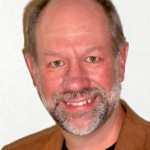 Mark Swanson, ND writes The Expert Report column, which is featured monthly in NDNR. Doctor Swanson is the Chief Medical Officer at Pure Encapsulation, Inc. and for more than 20 years has been the company’s Senior Medical Advisor. He is a former Associate Editor for the American Journal of Naturopathic Medicine, National Product Director, and consultant to the nutritional supplement industry. He is a pioneer graduate of Bastyr University, 1984. Dr. Swanson maintains his private practice specializing in functional-naturopathic medicine in Sequim, Wa. Contact: [email protected]
Mark Swanson, ND writes The Expert Report column, which is featured monthly in NDNR. Doctor Swanson is the Chief Medical Officer at Pure Encapsulation, Inc. and for more than 20 years has been the company’s Senior Medical Advisor. He is a former Associate Editor for the American Journal of Naturopathic Medicine, National Product Director, and consultant to the nutritional supplement industry. He is a pioneer graduate of Bastyr University, 1984. Dr. Swanson maintains his private practice specializing in functional-naturopathic medicine in Sequim, Wa. Contact: [email protected]
References
1. Faruqui F, Khubchandani J, Price JH, Bolyard D, Reddy R. Sleep disorders in children: a national assessment of primary care pediatrician practices and perceptions. Pediatrics. 2011;128(3):539-546.
2. Start School Later, Inc. Health, safety and equity in education. http://www.startschoollater.net/index.html. Accessed January 15, 2013.
3. Blunden S, Lushington K, Lorenzen B, Ooi T, Fung F, Kennedy D. Are sleep problems under-recognised in general practice? Arch Dis Child. 2004;89(8):708-712.
4. Mindell JA, Owens JA. A Clinical Guide to Pediatric Sleep: Diagnosis and Management of Sleep Problems. New York, NY: Lippincott, Williams & Wilkins; 2009.
5. National Sleep Foundation. 2004 Sleep in America poll. http://www.sleepfoundation.org/article/sleep-america-polls/2004-children-and-sleep. Accessed January 16, 2013.
6. National Sleep Foundation. 2006 Sleep in America poll. http://www.sleepfoundation.org/article/sleep-america-polls/2006-teens-and-sleep. Accessed January 16, 2013.
7. American Academy of Sleep Medicine. International Classification of Sleep Disorders: Diagnostic & Coding Manual. 2nd ed. Darien, IL: American Academy of Sleep Medicine; 2005.
8. Kataria S, Swanson MS, Trevathan GE. Persistence of sleep disturbances in preschool children. J Pediatr. 1987;110(4):642-646.
9. Centers for Disease Control and Prevention. Insufficient sleep is a public health epidemic. http://www.cdc.gov/features/dssleep/. Accessed January 15, 2013.

